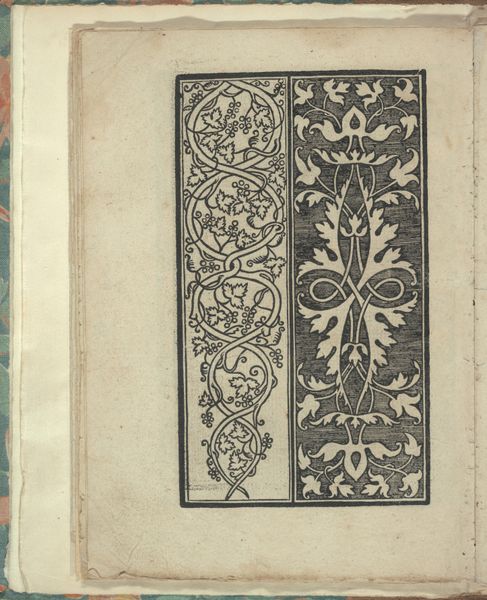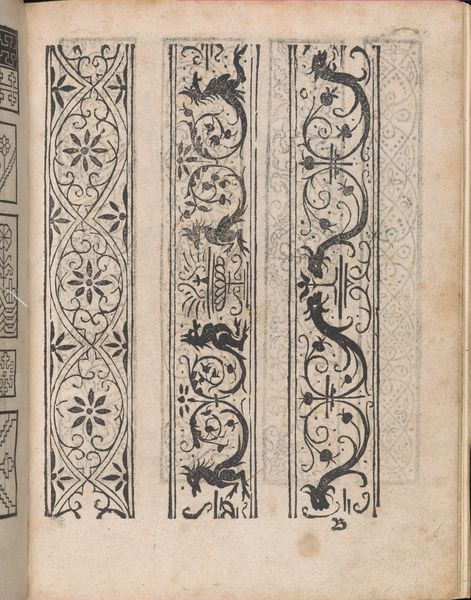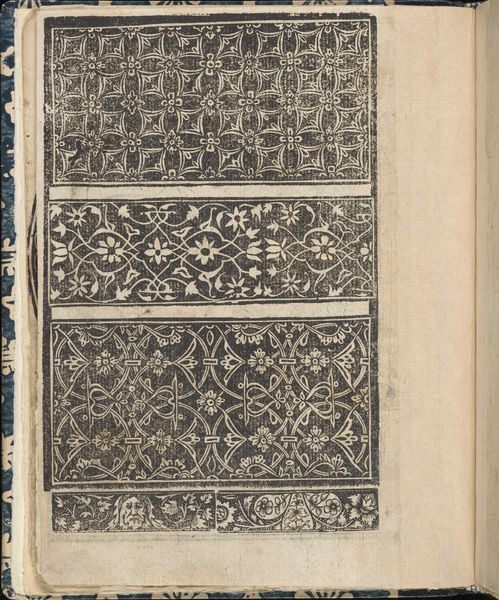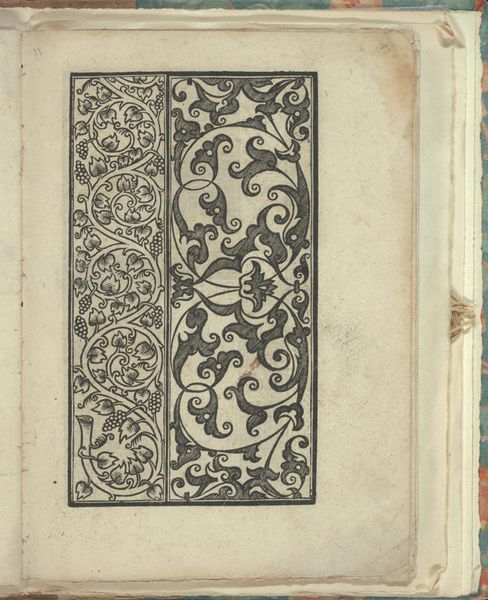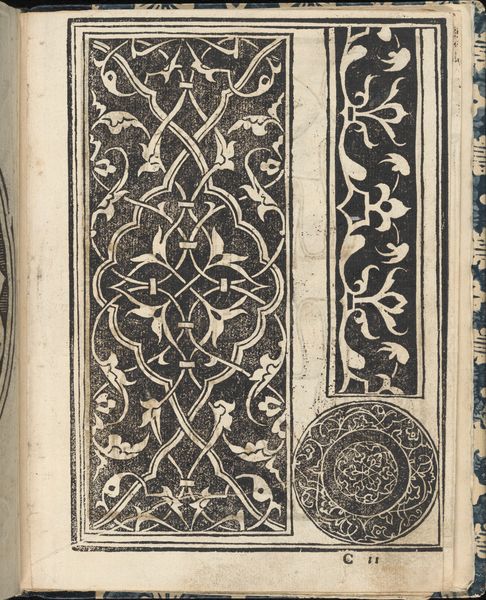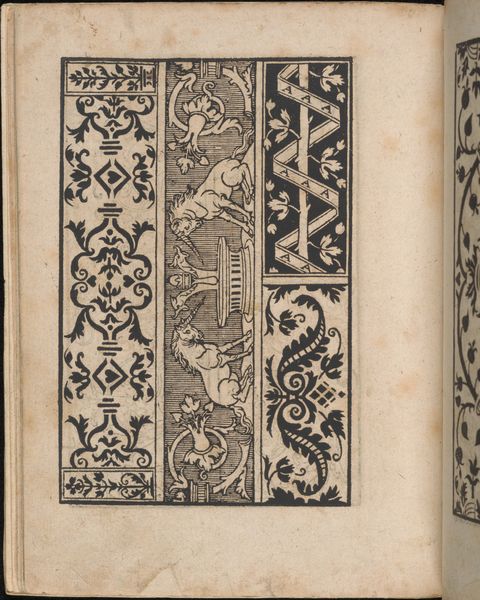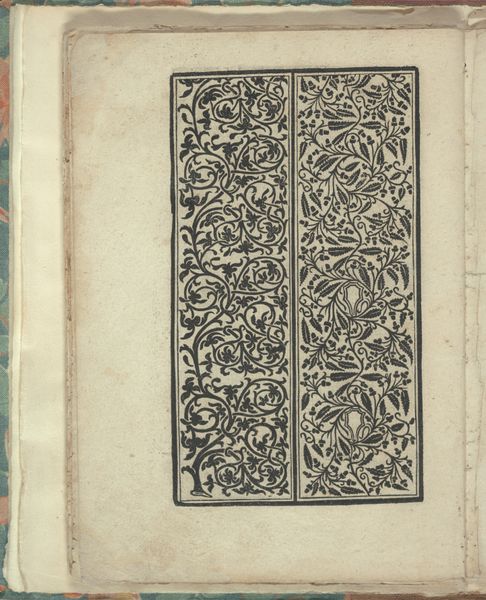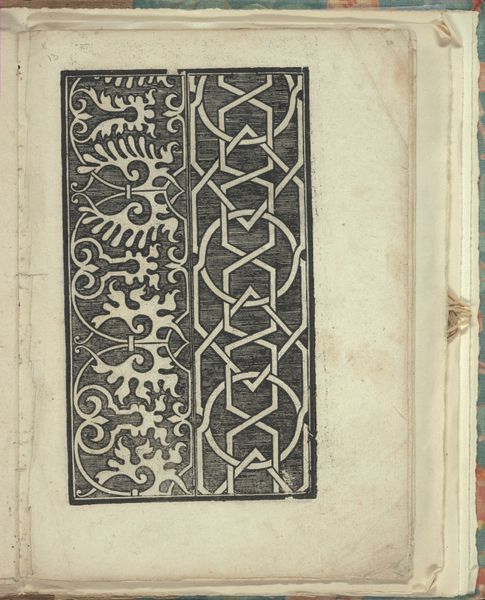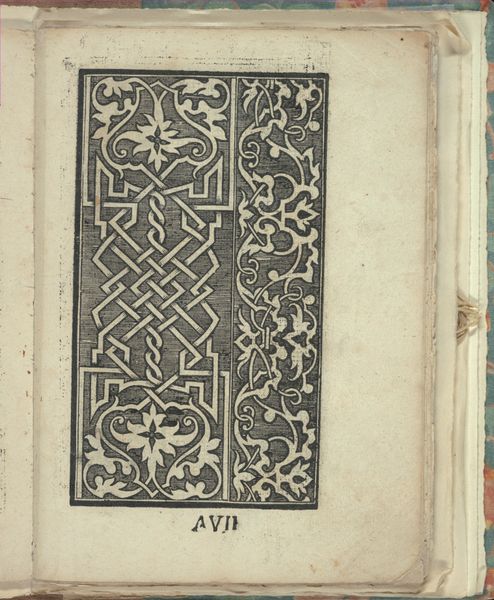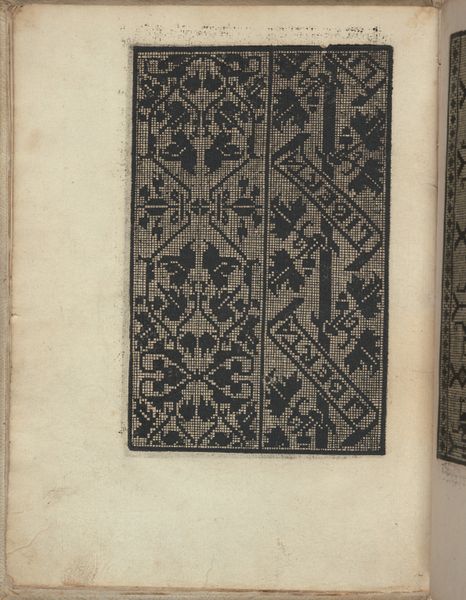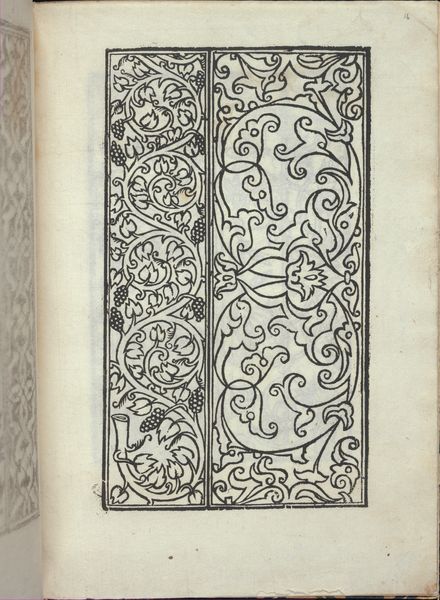
drawing, print, intaglio
#
drawing
# print
#
book
#
intaglio
#
11_renaissance
#
geometric
#
pattern repetition
Dimensions: Overall: 7 13/16 x 6 3/16 x 3/8 in. (19.8 x 15.7 x 1 cm)
Copyright: Public Domain
Editor: So, here we have "Essempio di recammi, page 7 (recto)" from 1530 by Giovanni Antonio Tagliente. It’s an intaglio print—looks like a page from a book. The design is so intricate and gives off a feeling of delicate ornamentation and I notice a striking geometric repetition. How would you interpret this page? Curator: The visual language here is fascinating, isn't it? Look at how the geometric patterns intertwine with organic, flowing floral motifs. Consider, for a moment, that patterns, like this one, carried coded social messages; they were part of visual culture of the time. Think of this design as an alphabet of its own, instantly legible to 16th century eyes trained to read social class and aspiration through clothing and interior decor. Does this interplay of organic and inorganic feel harmonious, or is there a tension to your eye? Editor: I hadn’t thought about it as a coded message before, but I see what you mean. I think there is a really elegant harmony but also some tension. The sharp lines are contained within those curving botanical shapes... what about the book itself, what can you tell me? Curator: Books like these were pattern books; visual resources democratizing designs, originally only accessible to the wealthy elite. Printmaking allowed a much broader audience – middling merchants and their families - to consume trending designs which is so compelling, isn't it? The geometric precision offers stability and order, whereas the organic vines speak to growth and fertility. These are all deeply symbolic. Think about the symbolism attached to "home," of self-making for these 16th-century folk! It gives you a different understanding, right? Editor: Absolutely, understanding the purpose of this imagery back then as patterns to be replicated versus an image to simply look at shifts everything! It adds layers of meaning to the visual composition, it feels so immediate! Curator: Indeed! We see not just a pattern, but a cultural touchstone reflecting the aspirations and visual vocabulary of an era, offering a glimpse into how people constructed meaning.
Comments
No comments
Be the first to comment and join the conversation on the ultimate creative platform.

